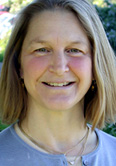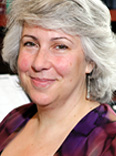Recent research indicates that having dense breasts is the biggest breast cancer risk, apart from normal aging or having two or more of one's closest relatives - mother, sisters - diagnosed with the disease. About one in three postmenopausal women has dense breasts.
But how does a woman know whether she has dense breasts? And if she does, what is she supposed to do with this new knowledge?
UCSF researcher Karla Kerlikowske, MD, is working with physicist John Shepherd, PhD, and Steven Cummings, MD, to develop a better way to measure breast density. She also is creating new, simpler models for tallying breast cancer risk. These models include breast density as one risk factor among several.
There are drugs - Nolvadex and Evista - approved as preventive treatment by the US Food and Drug Administration for women scored as high risk on an index called the Gail model. But in practice, Kerlikowske says, few physicians are comfortable using this model as the basis for recommending drug treatment or more intense cancer screening, and few women actually take the drugs for prevention.
 |
Karla Kerlikowske
Photo/Sarah Paris |
Working toward a risk model that physicians will trust and use more, Kerlikowske and Jeffrey Tice, MD, have come up with a first-generation prototype. Their new model considers only breast density, age, ethnicity, and whether a woman has had any breast biopsies or a mother or sister with a breast cancer diagnosis. "It's definitely better than the Gail model, and it's a lot simpler," Kerlikowske says.
What Are Dense Breasts?
Dense breasts are the opposite of fatty breasts. They have a higher proportion of connective and milk duct tissue. Breast density does not appear to relate to breast size or shape. It decreases with age and after menopause. Where the breast is dense, a mammogram of the tissue appears cloudy or opaque. Radiologists normally inspect mammograms and provide a qualitative assessment of density. In women with dense breasts, 50 percent or more of breast tissue appears opaque.
Women past menopause whose breast density is 75 percent or more have roughly three to four times the risk of being diagnosed with breast cancer within five years compared with women whose breast density is 25 percent or less, according to Kerlikowske's research.
X-rays are the basis for mammograms, but with different instrumentation, X-rays also are the basis for a technique used to measure bone density. The UCSF research team has modified this technique, shifting the focus from bone density to breast density measurement. Its use requires no radiation beyond what is needed for the mammogram, Kerlikowske says. Physicians now are using the new measure at six sites nationwide.
Biology of Breast Density and Cancer
 |
Thea Tlsty
Photo/Elisabeth Fall |
Just knowing that breast density is associated with breast cancer risk does not reveal why. To get at the biology, UCSF cancer and cell biology researcher Thea Tlsty, PhD, is leading a major new study funded by the National Cancer Institute.
Tlsty earlier saw that the abundant connective tissue and collagen protein found in normal, dense breast tissue superficially resembles the abnormal proliferation of connective tissue that occurs in the vicinity of cells that have undergone early steps toward becoming cancerous.
Now, Tlsty is leading research to compare normal, dense breast tissue with abnormal, precancerous breast tissue in molecular detail. Her lab team is tracking which genes are switched on and off in the milk duct cells that can give rise to cancer. The researchers are doing the same with the fat or connective tissue cells that surround the ducts. These different cell types take directions from one another. Abnormal signaling between duct cells and surrounding cells is a hallmark of breast cancer, Tlsty and others have found.
Tlsty suggests that the genetic events, proteins and signals that govern whether certain immature cells in the breast become fat cells or connective tissue cells might also play a role in cancer susceptibility.
"It's very exciting, and we hope to have more to report soon," she says.
Are Breast Density and Bone Mineral Density Independent Risk Factors for Breast Cancer?
Karla Kerlikowske, John Shepherd, Jennifer Creasman, Jeffrey A. Tice, Elad Ziv, Steve R. Cummings
Journal of the National Cancer Institute
Abstract |
Full Text | Full
Text (PDF) |
Related Links:
Probability of Breast Cancer in American Women
National Cancer Institute
UCSF Helen Diller Family Comprehensive Cancer Center

